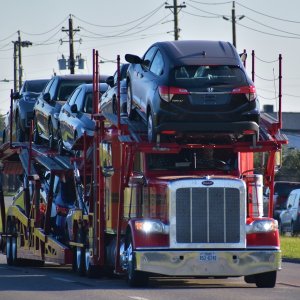Drive, Sell, and Retain: Winning in the Aftermarket

STORY INLINE POST
Q: How is the auto parts sector in Mexico adapting to the introduction of new technologies?
A: The auto parts sector has had to acclimatize to the rise of technology in both components and vehicles. As part of our vehicles portfolio, we offer technology that has been branded as MyFord Touch and MyLincoln Touch. We also need to take care of the infrastructure to service that technology, which involves training sales personnel, as well as service shop personnel, to ensure that they are familiar with the new technology from the moment they are exposed to our new vehicles. The sophistication of the auto parts sector is reflected in the parts we supply, although we continue to supply old parts like condensers since there are still old vehicles in operation that need them. There is an interesting mix in the Mexican market as it contains both very old vehicles and new vehicles that contain all the latest technology. To be competitive within the aftermarket sector, we have to be proactive. Vehicles are becoming more complex and technicians have to be trained every day. When we find an opportunity to improve customer experience, we seize it. The average vehicle age in Mexico is around 12-13 years which is something to bear in mind as we need to be smarter in attracting customers in that range. In the aftermarket sector, we are providing service for vehicles up to seven years old. The reason we stop above that vehicle age is because we are trying to attract specific customers into our service shops. We are not focusing on servicing older vehicles because those customers are more likely to pursue cheap, low-quality repairs.
Q: How do you differentiate yourself from other OEMs in terms of the distribution network?
A: Time, product quality, and close ties to the customer are qualities that differentiate Ford from other OEMs in terms of its distribution network. Our focus is on developing longterm relationships with customers. We have an aftersales strategy that has three key elements: drive, sell, and retain, and based on our key performance matrix, this strategy has been successful. We have been increasing the number of transactions passing through Ford’s service shops and this is also impacting the retention rates. We have been able to attract older vehicles that had not been returning to the shops in previous years, as a result of different promotions to convince customers to go to a Ford service shop instead of an independent shop.
Q: How important are delivery lead times to this strategy?
A: We are very focused on ensuring that the parts are delivered to the dealership on time. We also measure our performance in terms of the parts the dealer ordered and how many parts we were able to deliver. Sometimes there are exceptions, such as when we do not have the parts available, but these are called back-orders and represent only a small percentage. If we do not have the part, we see where it is available in Ford’s global supply chain and then we use airfreight to bring it here, after which the part goes directly from the depot to the dealer. Airfreight is used in order to speed up the delivery so that we continue to uphold our vision of delivering on time to the dealer. We deliver parts within 24 hours around the country with the exception of the Yucatan and Baja California peninsulas. Our outbound deliveries are based on trucks for stock orders, although air freight is used for emergencies and back-orders regardless where the dealer is. Railroad is applicable for inbound but not for outbound. This is because we have the responsibility to deliver the part on time to the dealer.
Q: What is Ford Aftermarket’s capacity to supply SKUs and what parts are primarily replaced in a vehicle?
A: Ford Aftermarket has the capacity to supply approximately 350,000 different SKUs for the Ford and Lincoln vehicles that are in operation in the country. However, 3,500 SKUs make up over 80% of our sales because not all parts will be replaced in the vehicle. It is difficult to say what the ideal percentage of SKUs is, because you never know what will break in a car. Therefore, what you have to do is be prepared with the parts and be ready to deliver to the dealer when needed. The aim is to sell the part and solve the customer’s problem. We have thousands of parts that we are able to distribute to the aftermarket, but at the end of the day, there is only a small group of parts driving the revenue. This is why managing lean inventories plays a role in helping to simplify the administration of the supply chain. We need to understand which parts are driving the demand, how many are needed, and where, in order to ensure the timely distribution of parts in every dealership within the country.




















